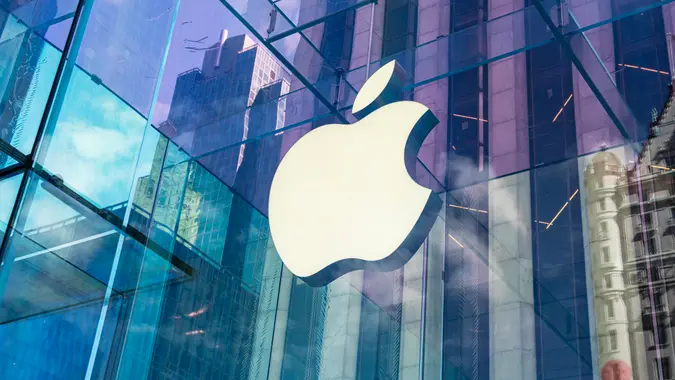Walmart vs. Costco: Which Stocks Have Seen Great Returns Over the Last 10 Years?

Commitment to Our Readers
GOBankingRates' editorial team is committed to bringing you unbiased reviews and information. We use data-driven methodologies to evaluate financial products and services - our reviews and ratings are not influenced by advertisers. You can read more about our editorial guidelines and our products and services review methodology.

20 Years
Helping You Live Richer

Reviewed
by Experts

Trusted by
Millions of Readers
Walmart and Costco are two of the most recognized retailers. Both companies strive to offer affordable prices on a wide range of products. Consumers aren’t the only ones who have benefited from Walmart and Costco.
These retail giants have made plenty of investors happy. Both stocks have delivered positive returns over many years while offering dividends for patient investors. While these stocks have delivered impressive long-term returns, one of them is the clear winner.
Here’s what you should know when comparing Walmart and Costco stock.
Walmart’s 10-Year Performance
According to Finance Charts, Walmart has delivered a 275% return over the past 10 years. Shares have also more than doubled over the past five years and are up by more than 40% over the past year, even with tariffs leading to negative year-to-date returns.
Walmart has been a haven during inflation. Shares only dropped by 2% in 2022 amid record inflation and regular interest rate hikes. People still need to buy the essentials in any economy, and many people turn to Walmart for the lowest prices.
Walmart has gained some momentum with its e-commerce sales, and that has led to meaningful stock gains. E-commerce sales increased by 16% year-over-year in the first quarter report for this year. It’s a sign that Walmart can compete with Amazon on the digital front.
The company has also benefited from an advertising segment that grew by 29% year-over-year. However, advertising only represents a small portion of Walmart’s revenue. It can take several years before Walmart Connect’s ad growth translates into higher profit margins.
Costco’s 10-Year Performance
Finance Charts shows that Costco has delivered a 667% return over the past decade. That’s more than double Walmart’s return during the same stretch, and the pattern continues with a shorter lens. The wholesaler has produced a 235% return for investors over the past five years. However, the stock has only been up by 31% over the past year. That’s still impressive, but it’s lower than Walmart’s return during the same stretch.
Costco was less resilient during the high inflation and interest rate hikes that defined 2022. Shares dropped by about 20% that year but rallied stronger than Walmart shares. Costco has been opening more wholesale locations and expanding its international footprint.
E-commerce has been one of Costco’s strengths in recent years. The company posted 17.1% year-over-year e-commerce growth in the first 24 weeks of fiscal 2025. Total revenue increased by 6.0% year-over-year.
Costco does not have an ad network like Walmart, but the company has the flexibility to raise annual membership fees as an additional revenue driver. However, hiking the membership fee too much or too often can result in Costco customers turning to other retailers.
Walmart vs. Costco: Which Stock Is the Better Buy?
Both retailers are in good positions to negotiate with suppliers to minimize tariff-related price hikes. Their leverage is hard to match due to their sprawling physical footprints, customer bases, and credibility. These advantages can help both retailers gain more market share due to tariffs increasing costs more rapidly in other retailers.
Although Costco has delivered higher long-term returns, Walmart looks like the better buy. Walmart has a lower P/E ratio and a higher dividend yield. Both companies report roughly mid-single-digit year-over-year revenue growth, but Walmart’s ad network can create long-term opportunities that result in higher profit margins and revenue growth rates. Both stocks are competitive picks, but Walmart looks more attractive at current levels.
 Written by
Written by  Edited by
Edited by 

























